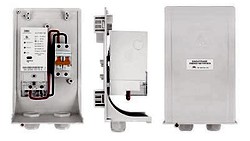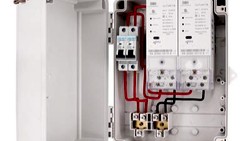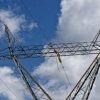Demand is a measure of average power consumption over a fixed time interval. Maximum (or peak) demand is the highest demand recorded over the billing period. The billing period is mostly end of the month.
Non-domestic electrical power users often have to pay a maximum demand charge in addition to the charge for the consumed energy. This additional charge is based on the highest amount of power used over a period (e.g. 15 minutes) during the billing period.
Sometimes the surcharge can also be related to the load-factor.
CLOU meters can operate with a fixed window or with a sliding window. Please note that not all meters have this function.
What is the difference?
The fixed window is defined in certain steps (e.g. 15 minutes), starting at the full hour. It can be programmed for the following fixed intervals:
- 5 minutes
- 15 minutes
- 30 minutes
- 60 minutes
- At the end of each fixed window period, the average power for that period is calculated. If this value is higher than the already existing value, it is stored as the MD (maximum demand).
The sliding window is the CLOU default setting. For sub integration period the default is 1 minute.
At the end of a sub integration period the average power is calculated for one integration period. If this value is higher than the already existing value then this is stored as MD. The integration period slides by a window of the sub integration period.
The maximum demand register MD will be reset at the set transferring time of each month (e.g. 1stof each month). The demand values measured with 6 digits, including 4 integers and 2 decimals.
What is the impact on using different intervals and sub-intervals?
In the example below we are generating a 24 hour load-profile. It's based on values between 30% peak and peak. (1440 samples)
Then we run a evaluation of the MD (maximum demand) for various meter settings. All fixed windows starting at midnight (00:00).
What do we learn?
- The shorter the integration period, the higher the MD value
- The shorter the sub-interval in the integration period, the higher the MD value (except of some strange profile constellations, you might find them)
What are the right settings?
It depends on the purpose for the demand measurement.
If you want to give a penalty to customers exceeding a defined limit, you need to follow the utility rules (e.g. 30 minutes fixed window).
If you are operating with an AMI system, you want to do a load-prediction (forecast) for a period of time. Here it is very common to use a 15 minutes integration time with 1 minute sub-intervals.
| new random load profile | ||
|---|---|---|
| MD Limit | kVA | |
| Peak load | kVA | |
| Integration period 5 minutes | ||
| Integration period 15 minutes | ||
| Integration period 30 minutes | ||
| Integration period 60 minutes | ||
Editor's note: This article was originally published in July 2019 and has been updated for comprehensiveness.





Thanks Laoren. Obviously one will not want to disconnect the winder too often. For argument's sake, let us say the Electricity supplier authority measures us on a 30 min period and I have a 2MW winder and my target is 30mW – 2MW. My Max demand reaches 30MW on the 25th minute. Will I obtain 28MW if I switch the winder off on the 25th minute?
Gerhard, let's consider that you are running the winder continuously and you don't have other consumers. Then the demand is equal to the MD (maximum demand). By your given value, the winder has a power of 2 MW. So, your MD will be 2 MW for each interval period. The meter MD register has a sub-register for recoding the energy, starting from zero. At the end of the period, it divides the recorded energy by the time. If the resulting power value is larger than the previous one, it updates the MD register. For your case, the recorded energy is 1 MWh, divided by 0.5 h (half hour) equals to an MD of 2 MW. As this case is interesting, I'll drop you a PM.
We want to save on max. demand on a mine. How do I go about dropping kVA(winder) before I reach a determined peak before the end of the measured interval
Gerhard, thank you for your question. If you want to reduce the maximum demand, it's all about timing. First, you need to find the meter settings for the MD interval. Then you need to identify the processes which are contributing the most to the consumption. For cyclic processes, I recommend shifting the ON-period in that way, that each MD period records only half of the demand. If you want (and can) disconnect the winder short before reaching the allowed peak, you can do the math and disconnect by a timer, which can be due to other fluctuations in your base load tricky. The alternative is automating the procedure with an MD sub-meter and communication interface, e.g. RS232. Then you can frequently poll the MD status and issue a signal to disconnect appliances before peak. I hope, you got the idea.